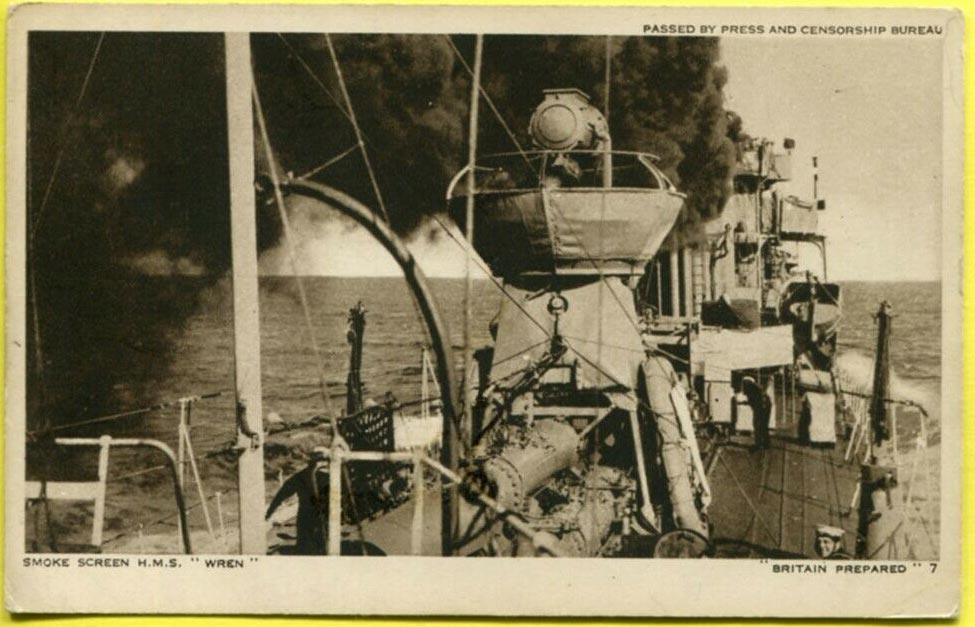
 HMS WREN
HMS WREN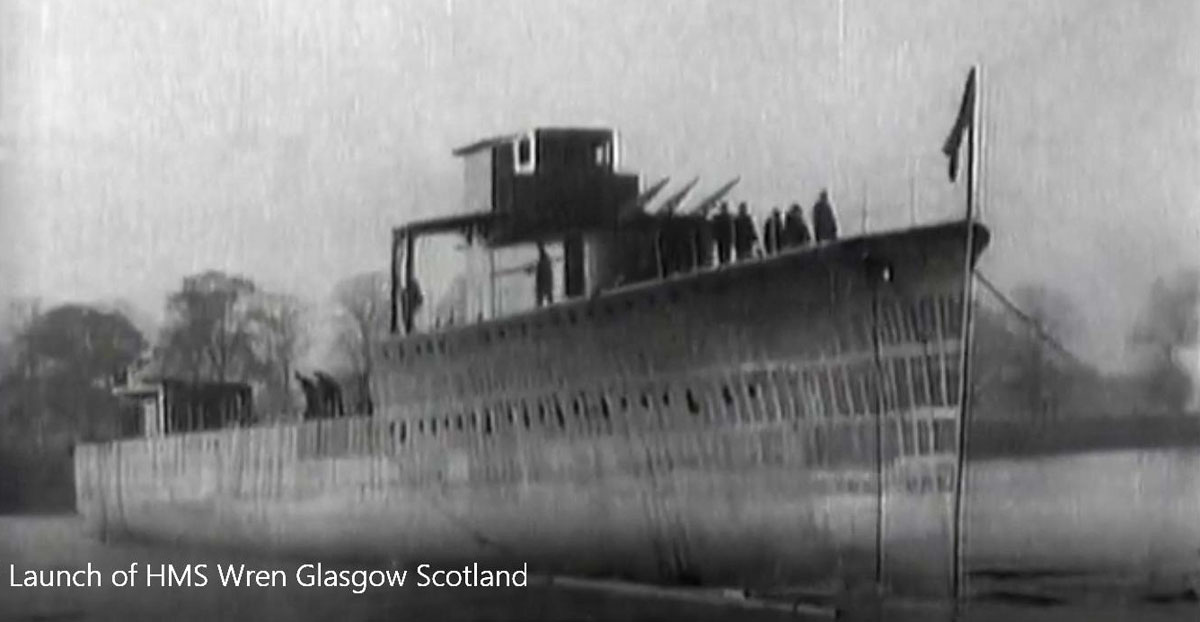
Commanding Officers
| Cdr C. Allen, 5 November, RN (1922 – 1 October, 1923) Cdr (I Gr.) Thomas C. C. Bolster, (RN 5 October, 1923 – 9 February, 1925) Lt Cdr John D. Harvey, RN (9 February, 1925 – 1 April, 1926) Cdr David J. R. Simson, RN 30 June, (1928 – 15 August, 1928) Lt Cdr Jack G. Bickford RN (15 Aug 1928 - April 1930) Lt Cdr (I Gr.) Richard C. V. Ross, RN (14 February, 1932 - Lt Cdr Roger C. Beckett, RN (10 March, 1933 - Lt Cdr Edward A. Gibbs, RN (13 January, 1936 - Lt Cdr Philip A. Cartwright, RN (22 March, 1937 - |
Cdr. William Halford Selby, RN (31 Jul 1939 - 13 Jan 1940) Cdr. Harold Thomas "Beaky" Armstrong, RN (13 Jan - 30 May 1940) Lt.Cdr. Frederick William George Harker, RN (30 May - 27 Jul 1940) |
Officers
| Sub Lt Jorgen L.W.M. Allison RN (13 May 1938 - Feb 1939) Lt Stephen H. "Nudger" Norris RN (14 Feb 1932 - Jan 1934) |
Officers aboard HMS Wren when she was lost Lt Cdr F W G Harker, RN Sub-Lit G D Astley-Cooper, RN Sub Lt C.E.M. Crabtree, RN Sub-Lieutenant E A Dicks, RNVR Gunner (T) T.J.Homan RN Warrant Engineer V S T Hunt, RN Surg Lt D L P de Courcey, RNVR Lt G K Horsey, RN |
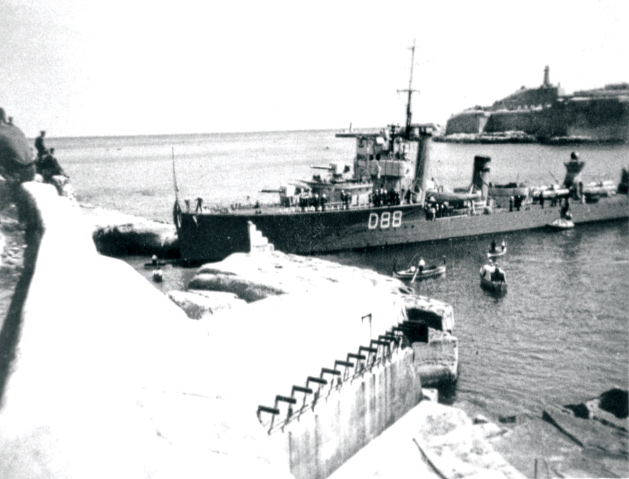 Norman Hollis (known as "Blondie" because he tanned to a dark mahogany colour at sea) travelled out to Singapore in HMS Defender which he had joined from HMS Broke on the 23rd of August 1934. He joined HMS Wren,
as a Telegraphist, in time to return to the Mediterranean with the
First Destroyer Flotilla after service on the China Station with tthe
8th Destroyer Flotilla.
Norman Hollis (known as "Blondie" because he tanned to a dark mahogany colour at sea) travelled out to Singapore in HMS Defender which he had joined from HMS Broke on the 23rd of August 1934. He joined HMS Wren,
as a Telegraphist, in time to return to the Mediterranean with the
First Destroyer Flotilla after service on the China Station with tthe
8th Destroyer Flotilla. 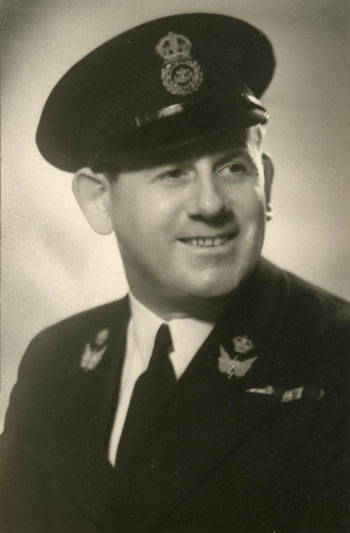
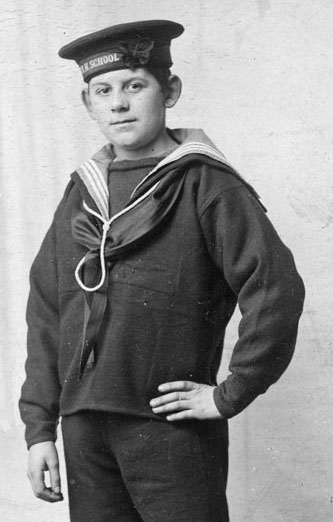 William
Ernest Baker was born at Portsmouth in 1906, the son of Ernest Baker, a stoker in the
Navy, who died in 1913 as a result of an accident at sea on HMS Ariadne leaving his wife to bring up three children (a boy and two girls) without
a naval pension. Maud was unable to support her son and he was admitted
to the Royal Navy Hospital School at Greenwich in 1918 (on right) and
joined the Royal Navy as a boy sailor at HMS Ganges in 1921.
William
Ernest Baker was born at Portsmouth in 1906, the son of Ernest Baker, a stoker in the
Navy, who died in 1913 as a result of an accident at sea on HMS Ariadne leaving his wife to bring up three children (a boy and two girls) without
a naval pension. Maud was unable to support her son and he was admitted
to the Royal Navy Hospital School at Greenwich in 1918 (on right) and
joined the Royal Navy as a boy sailor at HMS Ganges in 1921. 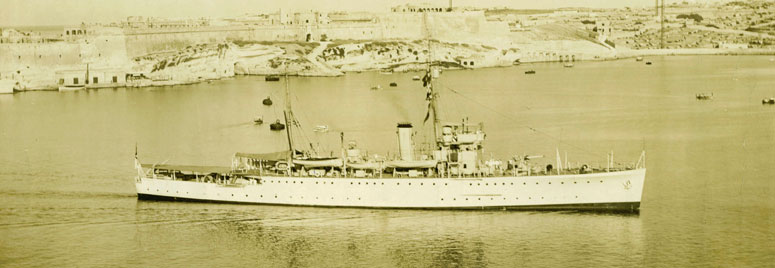
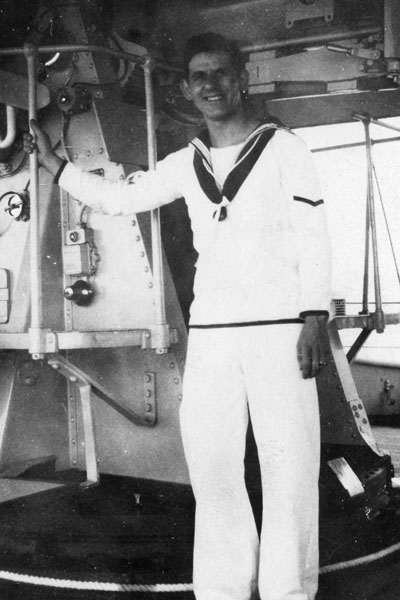 This photograph was taken in HMS Constance on the China Station
|
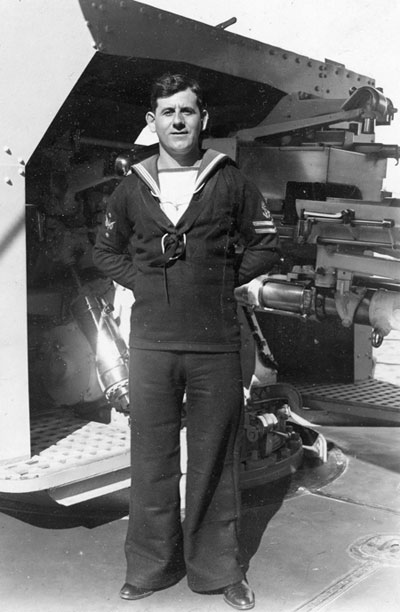 Leading Telegraphist Bill Baker on HMS Blanche in the Med
|
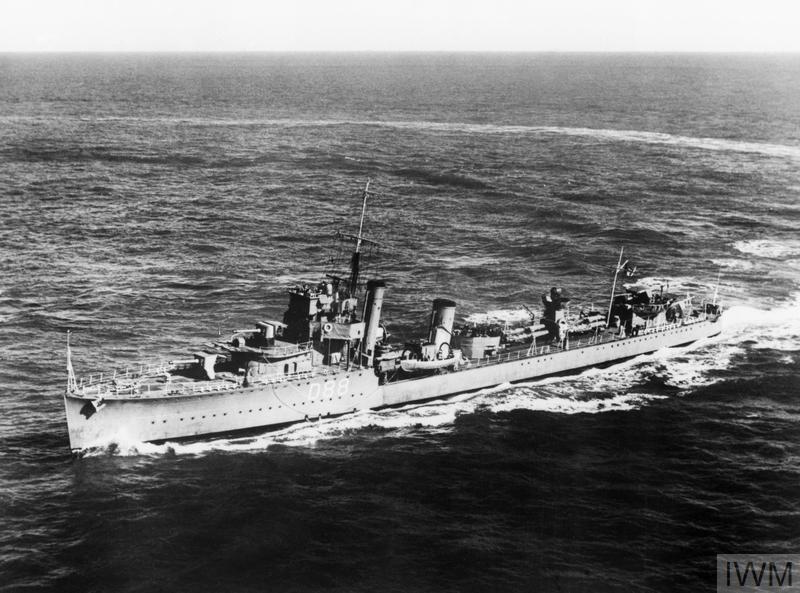
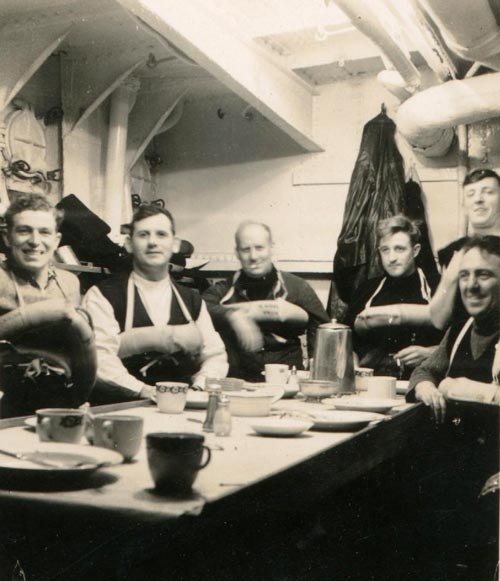 "I joined HMS Wren
as Acting Petty Officer Telegraphist on the 29th July 1939. We were on
shakedown cruises until war with Germany seemed imminent. HMS Wren
was initially based at Portsmouth and had the honour of transporting
the General Staff to Cherbourg to direct operations. After convoy
duties in the channel we were sent to Plymouth to assist in escorting
Atlantic convoys. We met incoming convoys at 17 degrees West and
escorted them to Dover where they dispersed and we took the “empties”,
the outbound convoys, to 17 degrees West and left them there to go
their own sweet way unescorted to the States.
"I joined HMS Wren
as Acting Petty Officer Telegraphist on the 29th July 1939. We were on
shakedown cruises until war with Germany seemed imminent. HMS Wren
was initially based at Portsmouth and had the honour of transporting
the General Staff to Cherbourg to direct operations. After convoy
duties in the channel we were sent to Plymouth to assist in escorting
Atlantic convoys. We met incoming convoys at 17 degrees West and
escorted them to Dover where they dispersed and we took the “empties”,
the outbound convoys, to 17 degrees West and left them there to go
their own sweet way unescorted to the States.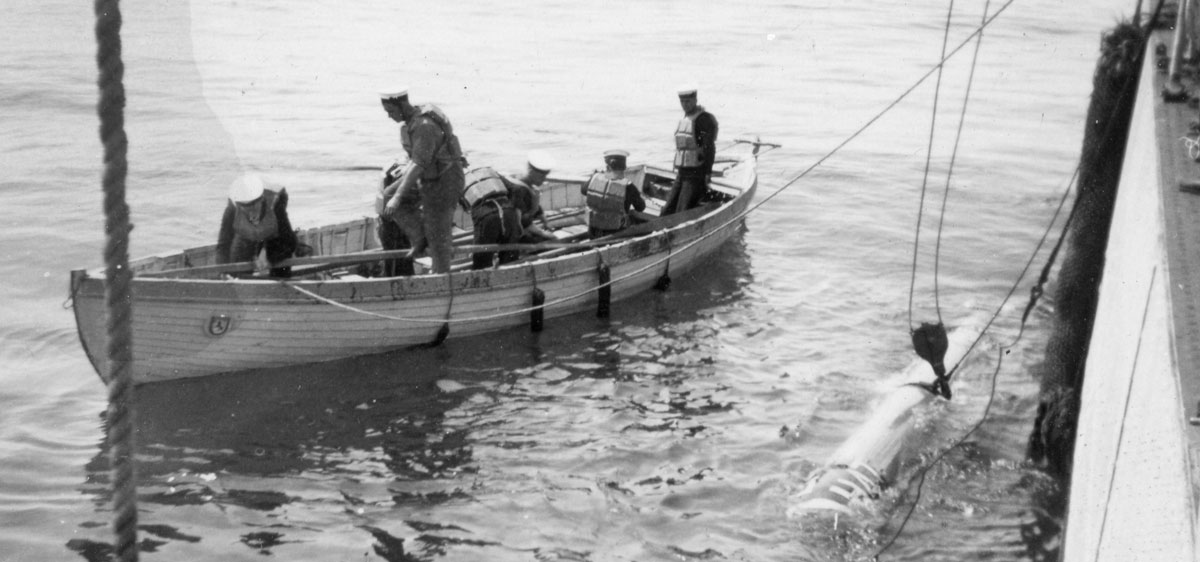

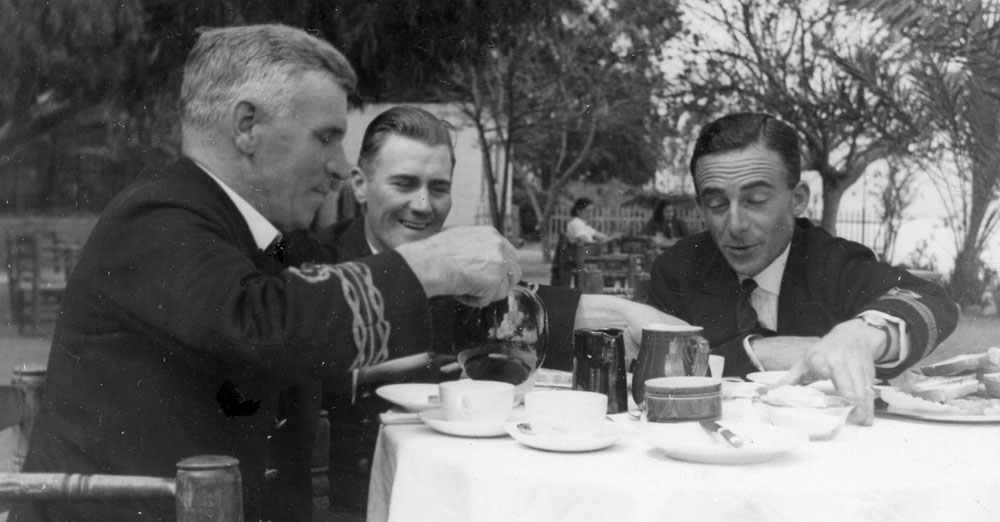
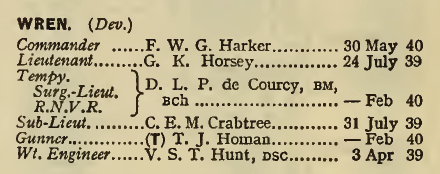
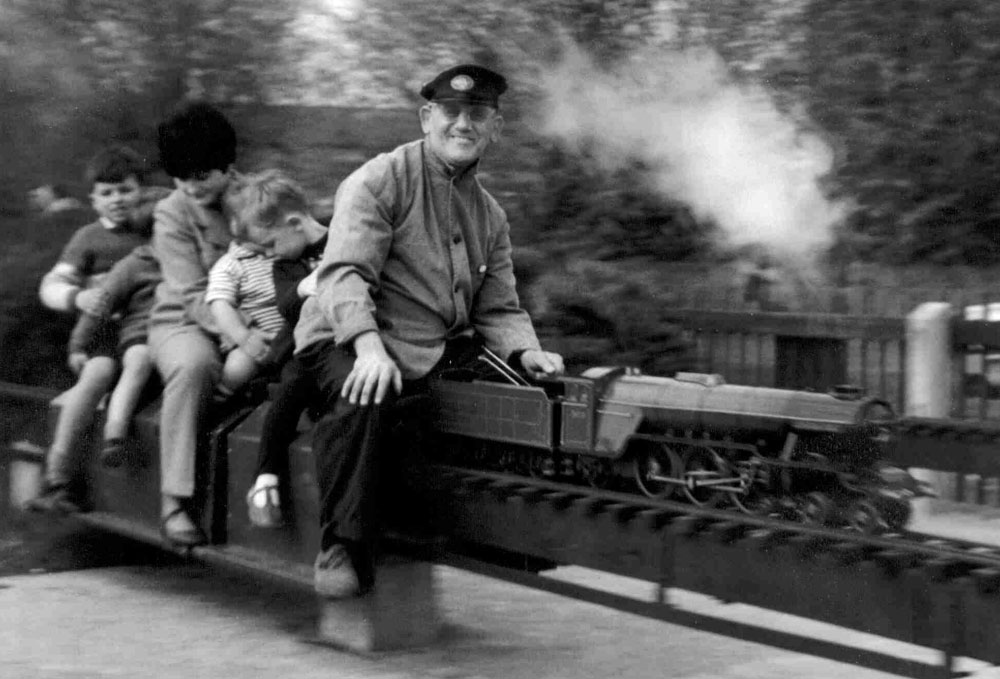
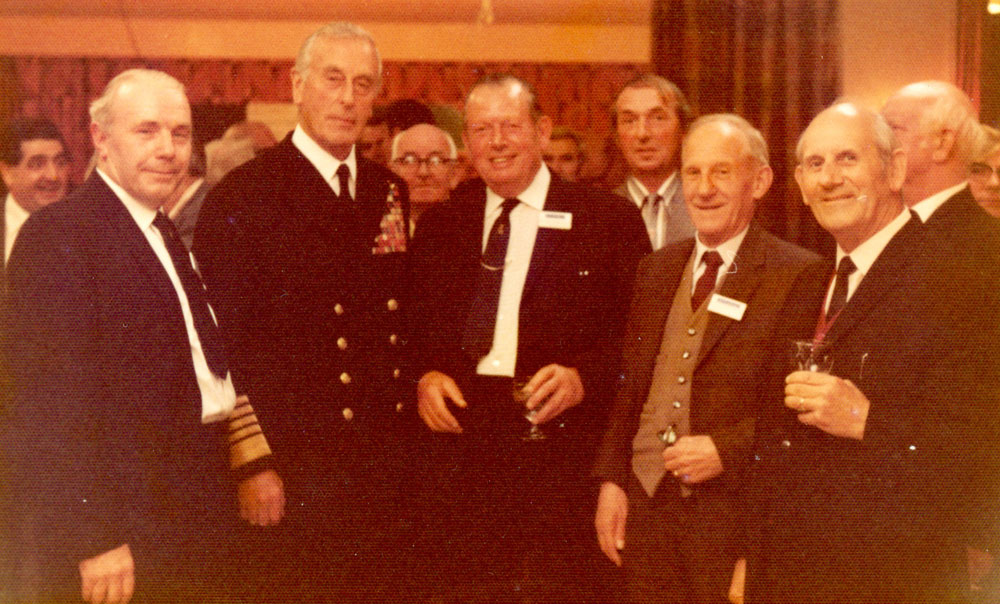
| ASHTON, Sidney, Stoker 1c, RFR, P/SSX 125734, killed ASTLEY-COOPER, Geoffrey D, Sub Lieutenant, killed BERRY, Thomas, Able Seaman, RNVR, P/CD/X 1931, killed BLANKS, Cyril E, Stoker 2c, P/KX 105403, killed BOYD, James O, Act/Stoker Petty Officer, P/KX 76668, killed BROUGHTON, Frank, Act/Stoker Petty Officer, P/KX 78221, killed CASSELS, John C McI, Signalman, RNVR, P/CD/X 2234, killed COMMONS, Leslie, Act/Leading Seaman, P/JX 125470, killed DAVIS, Edmund M, Act/Petty Officer, P/JX 135931, killed DAY, Phillip, Ordinary Seaman, P/JX 171958, killed DICKS, Edmund A, Ty/Sub Lieutenant, RNVR, killed FAUVEL, Stanley H, Petty Officer Steward (Pens), P/L 7178, killed FIRTH, Charles, Sick Berth Attendant, D/MX 57694, killed FROST, Stanley H, Able Seaman, RNVR, P/SD/X 1456, killed GRIGOR, Charles C, Act/Leading Seaman, P/SSX 22184, killed GRIMSDALE, Leslie R, Chief Petty Officer, P/J 113387, killed HARKER, Frederick W G, Lieutenant Commander, killed HOOPER, Richard F, Able Seaman, P/J 76270, killed |
HOPKINS, James W, Act/Leading Seaman, P/J 94803, killed HOWARD, Clifford, Able Seaman, P/SSX 14128, killed HUNT, Vernon S T, Warrant Engineer, killed LEMPRIERE, Raymond P, Able Seaman, P/J 44845, killed MACKINNON, Donald, Seaman, RNR, P/20733 A, killed PARR, Henry J, Officer's Cook 2c, P/L 14815, killed PEERS, William, Stoker Petty Officer, RFR, P/KX 75002, killed PICKERING, Sidney, Ordinary Seaman, P/JX 187089, killed PINDAR, Cyril F S, Ordinary Seaman, P/JX 189387, killed SCOFFINS, Claude B, Able Seaman, P/SSX 14025, killed SHEEL, Edgar, Able Seaman, RFR, P/SSX 12750, killed SHERRY, John, Leading Stoker, RFR, P/KX 76371, killed STEELE, William, Able Seaman, RFR, P/SSX 31541, killed STOCKDALE, Percy E, Ordinary Seaman, P/SSX 8774, killed TAYLOR, Ronald T, Stoker 1c, P/KX 90005, killed TUCKER, Albert B, Act/Engine Room Artificer 4c, P/MX 61403, killed URRY, Henry R G, Steward, P/L 13262, killed WAITE, Herbert G, Stoker 2c, P/K 105260, killed |
